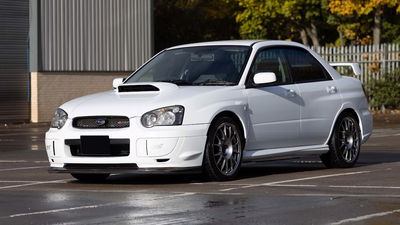Why The BMW Z3 M Is A Proper 90s Hero Car

BMW's new two-seater Z3 roadster got a fairly lukewarm reception when it was launched in 1995. The retro styling wasn't to everyone's tastes, but much worse, it was boring to drive.
There was enough buzz around the Z3's launch for the waiting list to run into 1997 however, but buyers were disappointed with the launch car's performance; a 1.9-litre, 16-valve four-pot was the only engine choice available, and its 138bhp just couldn't provide the go everyone wanted. A 189bhp, 2.8-litre straight-six introduced in '97 helped, but didn't really address the fundamental problem.
The Z3's handling was actually very good. It used the same chassis as the brilliant E36 3-series, so it was highly capable. But neither of the engines had the power to really exploit it. It just wasn't as satisfying to drive as a BMW roadster should be. The alchemists in M-Division realised as much and set to work on what turned out to be a masterpiece.
The Z3's transformation into an M-car was relatively simple, with most of the hardware being lifted from the awesome E36 M3 Evo. Suspension, brakes, limited-slip diff, pretty much all of it. The rear track was widened too, so the rear arches had to be stretched out to cover the massive wheels. New bumpers, a quad-exhaust system and new interior trim added to the specialness.
But all of that hardcore hardware would have been pointless without a suitably brawny engine. As luck would have it, the M3's magnificent 321bhp, 3.2-litre, straight-six slotted in under the bonnet easily. The result? 0-60mph in 5.2 seconds and a limited top speed of 155mph. More than enough to get the best from the Z3's fine chassis.
And boy, could you. The chassis easily coped with the immense power and, sat almost on top of the rear axle, meant you could feel exactly what was going on underneath. The short wheelbase meant it could get snappy if you took liberties, but otherwise the handling was nicely neutral. So you could understeer safely round a corner, or paint massive, rubbery arcs on the tarmac. Many commentators went so far as to call it the best handling car in the world.
The best got better when the M Roadster (as it was officially known) was joined by the M Coupe. The breadvan-like hatchback extension made it borderline ugly, if considerably more practical. But most significantly, the extra metalwork meant the Coupe was an unbelievable 2.7 times stiffer than its open-topped brother. The stronger structure was teamed with increased spring and damper rates for even sharper handling.
Less than 2000 M Roadsters and Coupes of the 21,000 or so built came to the UK, so they've always been a rare sight. Prices are quite strong and gradually going up - you'll pay around £7000 to £8000 for a decent Roadster, twice that for a Coupe. That's a lot for a 15 year-old car, but not that much for one of the finest driver's cars that BMW has ever built.
Image sources: Netcarshow.com













Comments
No comments found.